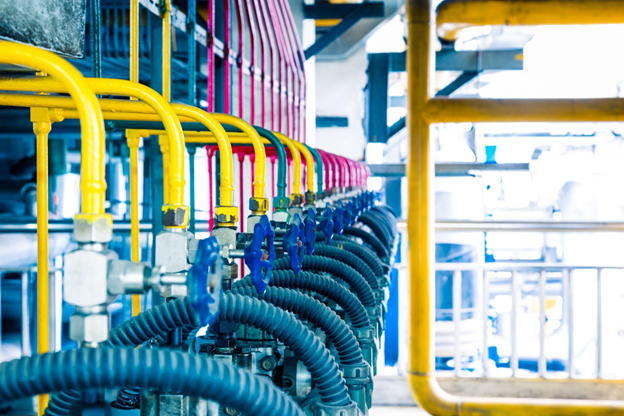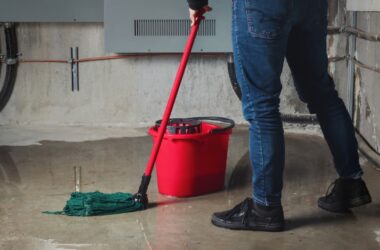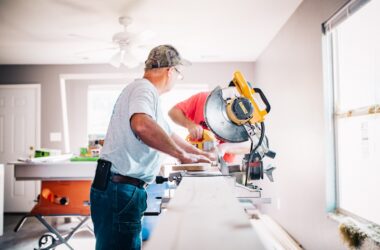Compressed air piping systems are an essential component in many industrial and commercial settings, ensuring the efficient and reliable delivery of compressed air to various tools, machinery, and processes. These systems are critical in maintaining operational efficiency and productivity. In this comprehensive guide, we will explore the key aspects of compressed air piping systems, including the materials used, design considerations, installation practices, and maintenance tips. We’ll also delve into the benefits of using blue line poly pipe for compressed air applications.
Understanding Compressed Air Piping Systems
Compressed air systems are used to convey air that has been pressurized to a level higher than atmospheric pressure. This pressurized air is then distributed through a network of pipes to various end-use points. The efficiency and reliability of the entire system heavily depend on the design and installation of the piping network.
Key Components of Compressed Air Systems
- Air Compressor: The heart of the system, responsible for compressing ambient air to the desired pressure.
- Filters and Dryers: Remove impurities and moisture from the compressed air to prevent damage to downstream equipment.
- Receivers: Act as storage tanks to balance the supply and demand of compressed air.
- Piping Network: Distributes the compressed air to various tools and equipment.
- Regulators and Controls: Maintain the correct pressure levels throughout the system.
Materials for Compressed Air Piping Systems
Choosing the right material for compressed air piping is crucial for ensuring system efficiency, longevity, and safety. Several materials are commonly used, each with its own advantages and disadvantages.
1. Galvanized Steel
Galvanized steel pipes are durable and can handle high pressures. However, they are prone to corrosion, which can lead to rust formation and air contamination. The rough interior surface can also cause pressure drops and reduce airflow efficiency.
2. Aluminum
Aluminum pipes are lightweight, corrosion-resistant, and easy to install. They offer a smooth interior surface, reducing friction and pressure drops. Aluminum systems are generally more expensive but provide a long-term solution with minimal maintenance.
3. Copper
Copper pipes are known for their excellent corrosion resistance and durability. They are easy to install and provide a smooth interior surface for efficient airflow. However, copper is expensive and may not be suitable for all budgets.
4. Plastic (PVC and CPVC)
Plastic pipes are lightweight, easy to install, and relatively inexpensive. However, PVC and CPVC pipes can become brittle over time and may not be suitable for high-pressure applications. They also have lower temperature resistance compared to metal pipes.
5. Polyethylene (PE)
Polyethylene pipes, particularly blue line poly pipe, are gaining popularity for compressed air systems. These pipes are flexible, easy to install, and resistant to corrosion. They can handle high pressures and temperatures, making them a reliable choice for many applications.
Advantages of Blue Line Poly Pipe for Compressed Air Systems
Blue line poly pipe, specifically designed for compressed air applications, offers several advantages over traditional piping materials.
1. Corrosion Resistance
Blue line poly pipe is highly resistant to corrosion, ensuring a longer lifespan and reducing the risk of air contamination. This property makes it ideal for use in environments where moisture or chemicals are present.
2. Flexibility and Ease of Installation
The flexibility of blue line poly pipe allows for easy installation, even in tight or complex layouts. The lightweight nature of the material reduces the need for heavy lifting equipment and minimizes installation time and labor costs.
3. Smooth Interior Surface
The smooth interior surface of blue line poly pipe reduces friction and pressure drops, ensuring efficient airflow throughout the system. This can lead to energy savings and improved performance of pneumatic tools and equipment.
4. Durability and Strength
Blue line poly pipe can withstand high pressures and temperatures, making it suitable for a wide range of industrial applications. Its durability reduces the need for frequent replacements and maintenance.
5. Cost-Effectiveness
While the initial cost of blue line poly pipe may be higher than some traditional materials, its longevity, low maintenance requirements, and energy efficiency can result in significant cost savings over the life of the system.
Designing a Compressed Air Piping System
Proper design of a compressed air piping system is essential to ensure optimal performance and efficiency. Here are some key considerations:
1. Pipe Sizing
Selecting the correct pipe size is crucial for maintaining adequate airflow and pressure. Undersized pipes can lead to pressure drops and reduced system efficiency, while oversized pipes can increase costs unnecessarily. Pipe sizing should be based on the maximum flow rate and pressure requirements of the system.
2. Layout and Configuration
The layout of the piping network should minimize the length of runs and the number of bends and fittings, as these can cause pressure drops and reduce efficiency. A looped system, where the main supply line forms a loop around the facility, can help balance pressure and improve reliability.
3. Support and Anchoring
Proper support and anchoring of pipes are essential to prevent sagging, vibration, and movement, which can lead to leaks and system damage. Supports should be spaced according to the pipe material and size, and flexible connections should be used to accommodate thermal expansion and contraction.
4. Condensate Management
Effective condensate management is crucial to prevent moisture buildup in the system, which can cause corrosion and damage to pneumatic tools. Properly placed drains, filters, and dryers should be included in the system design to remove condensate effectively.
Installation Best Practices
Following best practices during the installation of a compressed air piping system can ensure optimal performance and longevity.
1. Use Quality Materials
Investing in high-quality pipes, fittings, and components will pay off in the long run by reducing the risk of leaks, corrosion, and system failures.
2. Ensure Proper Joint Connections
Properly made joints are critical to preventing leaks and maintaining system pressure. Use the recommended joining methods for the selected pipe material, such as welding, threading, or press fittings.
3. Avoid Sharp Bends and Turns
Sharp bends and turns can cause pressure drops and reduce airflow efficiency. Use long-radius bends and minimize the number of elbows and fittings wherever possible.
4. Pressure Testing
After installation, the entire system should be pressure tested to ensure there are no leaks and that the system can handle the operating pressure. Any leaks or weaknesses should be addressed before the system is put into service.
Maintenance Tips for Compressed Air Piping Systems
Regular maintenance is essential to keep the compressed air system running efficiently and to extend its lifespan.
1. Inspect for Leaks
Regularly inspect the system for leaks, especially at joints and connections. Even small leaks can lead to significant energy losses over time.
2. Check Filters and Dryers
Filters and dryers should be checked and maintained regularly to ensure they are removing contaminants and moisture effectively. Replace filter elements as needed and drain condensate from dryers.
3. Monitor Pressure and Flow
Monitoring system pressure and flow can help identify issues such as blockages, leaks, or undersized piping. Use pressure gauges and flow meters to keep an eye on system performance.
4. Keep the System Clean
Keep the piping system clean and free from dust, debris, and oil buildup. Contaminants can cause blockages and damage to pneumatic tools and equipment.
Conclusion
A well-designed and properly maintained compressed air piping system is essential for ensuring efficient and reliable operation in industrial and commercial applications. By choosing the right materials, such as blue line poly pipe, and following best practices for design, installation, and maintenance, you can optimize the performance and longevity of your compressed air system. Understanding these key aspects will help you make informed decisions and achieve the best results for your specific needs.







